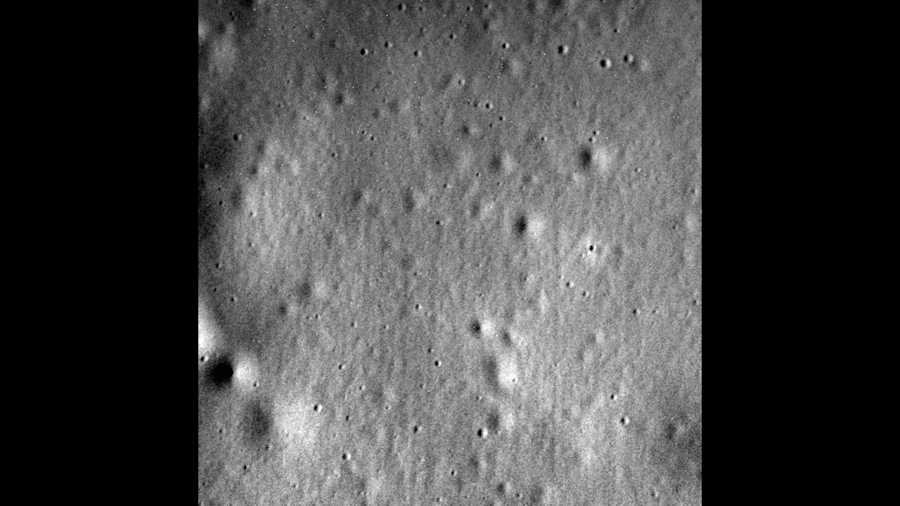Thursday marked the end of an era, as NASA's MESSENGER spacecraft intentionally crashed onto the planet Mercury.
MESSENGER (MErcury Surface, Space ENvironment, GEochemistry, and Ranging) impacted, as expected, at 3:26 PM EDT. And this spacecraft had an important Michigan connection, as I'll tell you later in this article.
Recommended Videos
Since MESSENGER was nearly out of propellant – which is used to fire navigation jets to control its location and altitude - there was no choice but to end the mission and crash the spacecraft. Mission controllers were able to confirm the end of operations at 3:40 p.m., when no signal was detected by the Deep Space Network (DSN) station in Goldstone, California, at the time the spacecraft would have emerged from behind the planet had MESSENGER not impacted the surface.
This conclusion was independently confirmed by the DSN's Radio Science team, who were simultaneously looking for the signal from MESSENGER from their posts in California.

MESSENGER's Final Image – April 30, 2015
Here are some cool facts from my friends at U of M:
1. Meteors with the same mass as MESSENGER slam into Mercury about every month or two, and typically with 10 times the speed and 100 times the energy. The planet doesn't have a thick atmosphere, like Earth, that would slow down objects headed for the surface.
2. The crater the spacecraft left near Mercury's north pole was expected to be about 50 feet wide. That's the width of an NBA basketball court!??
3. The 1,131-pound spacecraft hit with the energy of about a ton of TNT, or the force of a car traveling at about 2,000 mph!?
4. At almost 9,000 mph, the craft was traveling three times faster than a speeding bullet and nearly twelve times the speed of sound! ??
5. On MESSENGER's last orbit, it passed just 900 to 1,800 feet over the planet's surface. We have buildings that tall on Earth! ??
6. Nearly 55 percent of MESSENGER's weight at launch was fuel - which was about to run out.
MESSENGER was launched on August 3, 2004, and it began orbiting Mercury on March 18, 2011. The spacecraft completed its primary science objectives by March 2012. Because MESSENGER's initial discoveries raised important new questions and the payload remained healthy, the mission was extended twice, allowing the spacecraft to make observations from extraordinarily low altitudes and capture images and information about the planet in unprecedented detail.
"Today we bid a fond farewell to one of the most resilient and accomplished spacecraft ever to have explored our neighboring planets," said Sean Solomon, MESSENGER's Principal Investigator and Director of Columbia University's Lamont-Doherty Earth Observatory. "Our craft set a record for planetary flybys, spent more than four years in orbit about the planet closest to the Sun, and survived both punishing heat and extreme doses of radiation. Among its other achievements, MESSENGER determined Mercury's surface composition, revealed its geological history, discovered that its internal magnetic field is offset from the planet's center, taught us about Mercury's unusual internal structure, followed the chemical inventory of its exosphere with season and time of day, discovered novel aspects of its extraordinarily active magnetosphere, and verified that its polar deposits are dominantly water ice. A resourceful and committed team of engineers, mission operators, scientists, and managers can be extremely proud that the MESSENGER mission has surpassed all expectations and delivered a stunningly long list of discoveries that have changed our views not only of one of Earth's sibling planets but of the entire inner solar system."

The sunlit side of Mercury, as imaged by MESSENGER
One instrument onboard MESSENGER, dubbed FIPS (Fast Imaging Plasma Spectrometer), was designed and built at the University of Michigan, and took atmospheric measurements.
"(MESSENGER was) the culmination of decades of aspirations and dreams for the U-M FIPS team," said team leader Thomas Zurbuchen, professor in the departments of Atmospheric, Oceanic and Space Science and Aerospace Engineering at the College of Engineering. "FIPS (was) the first plasma instrument to explore the plasmas in Mercury's space environment."
Although the MESSENGER flight mission has now officially ended, the science data collected by MESSENGER are archived in NASA's Planetary Data System, where they are preserved and remain accessible for future use by the scientific community for years and even decades to come. The Science Team will continue to use these data to pose and answer questions about Mercury's formation and evolution and the planet's place in our solar system through the end of the MESSENGER project in May 2016.

